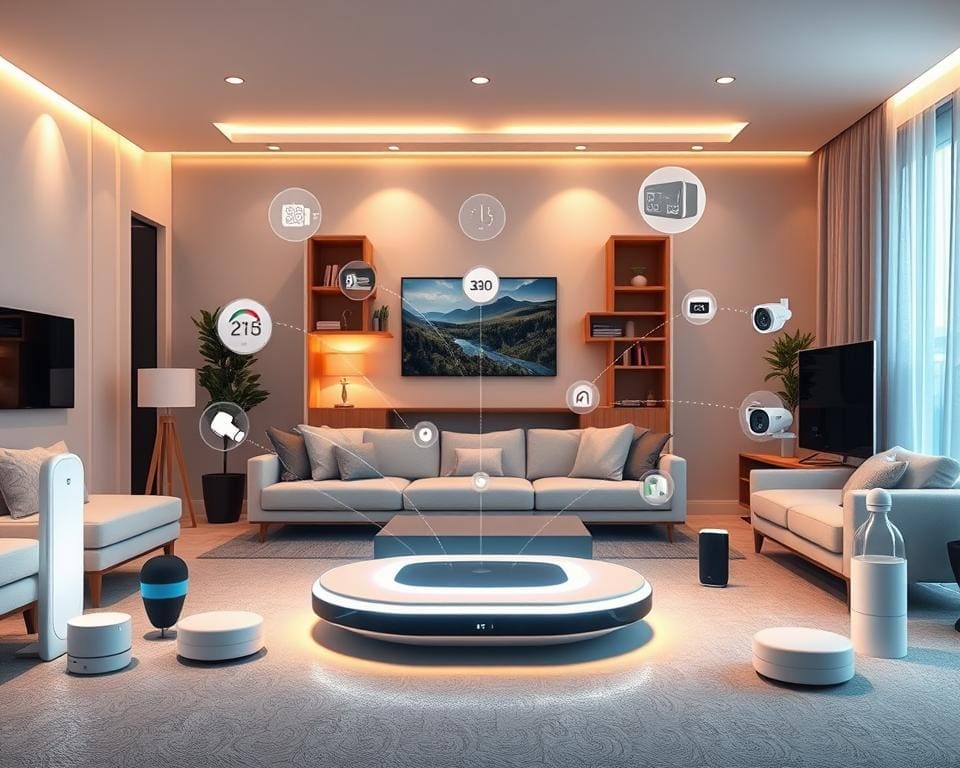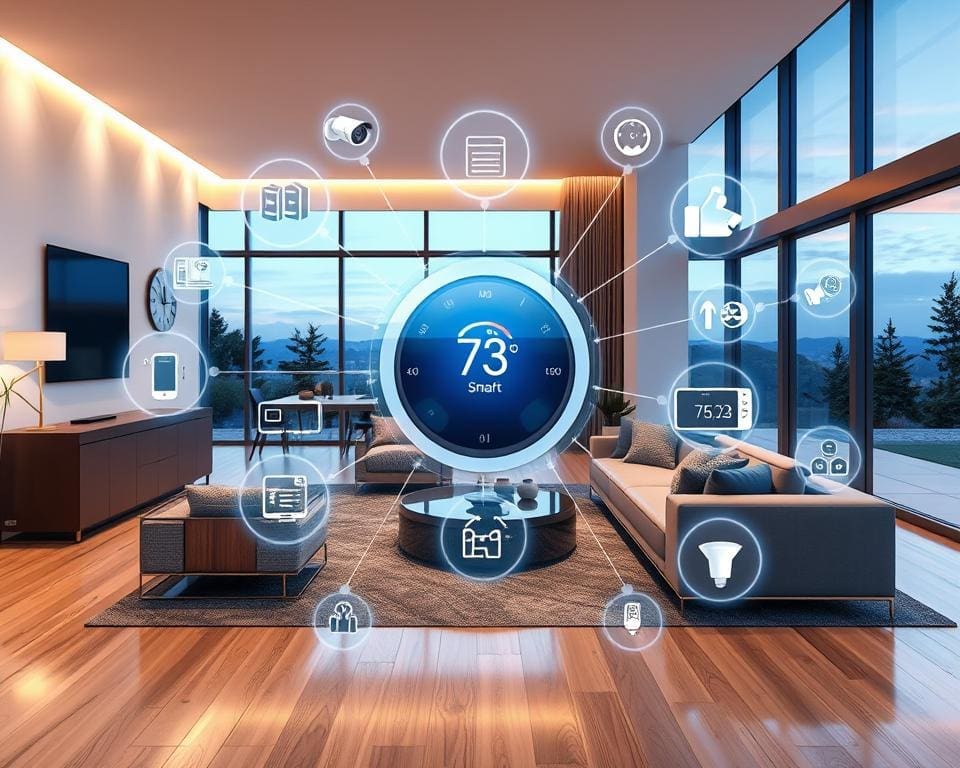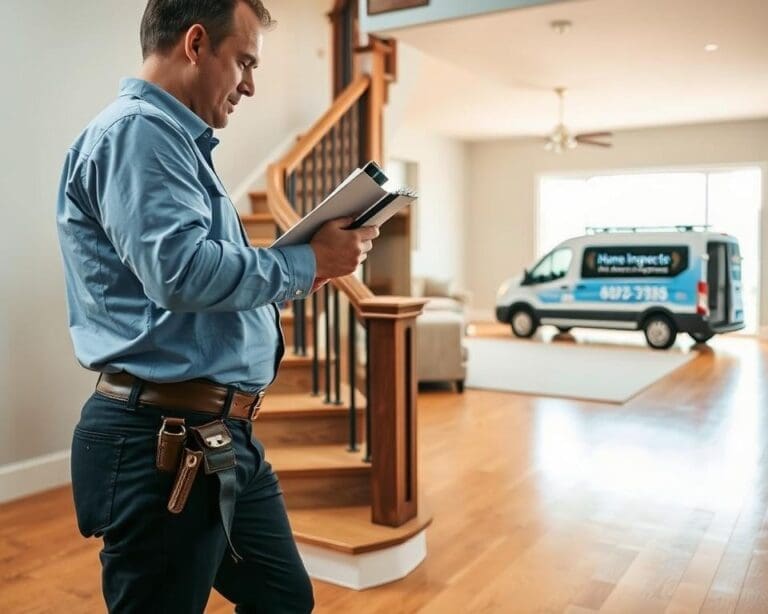In an age where technology seamlessly weaves into our daily lives, Smart Home Hubs stand at the forefront of home automation, offering a pivotal role in connecting all your devices. These centralised systems enable effortless management of various Connected Devices, enhancing both convenience and security for homeowners. With Smart Home Hubs, the potential of Home Automation Systems expands, transforming the way we interact with our living spaces. This article delves into the significance of these hubs and illuminates how they simplify the journey towards a smarter home.
Understanding Smart Home Hubs
In today’s rapidly advancing world of technology, Smart Home Hubs play a crucial role in connecting various home devices, allowing for seamless interaction and enhanced control. These central devices simplify the management of home technology, making everyday living more convenient and efficient.
What is a Smart Home Hub?
A Smart Home Hub is a pivotal component within smart home systems. It acts as a central point for communication, linking multiple Smart Hub Devices, such as lights, cameras, and thermostats. This integration fosters a streamlined experience, enabling users to interact effortlessly with their home technology. Notable examples include the Amazon Echo Plus and the Google Nest Hub, which showcase the diverse functionalities available to consumers.
The Importance of a Smart Hub in Home Automation
Smart Home Hubs are indispensable for home automation, providing a unified platform that facilitates communication across different device protocols like Zigbee, Z-Wave, and Wi-Fi. This interoperability is essential for crafting a fully integrated smart home experience. Users benefit from the ability to automate tasks, gain remote monitoring capabilities, and enhance their overall efficiency. Embracing these modern solutions transforms ordinary living into an extraordinary experience.

Smart Home Hubs: Connecting All Your Devices
Smart home hubs serve as the central command for connecting devices, uniting various technologies into a seamless ecosystem. These hubs facilitate smart home integration, allowing different devices in your home to communicate and work together effortlessly. Imagine a scenario where your lights illuminate as you enter, or your thermostat adjusts to a comfortable temperature automatically – this is the power of efficient home connectivity.
The technology employed by smart hubs transforms living spaces into responsive environments. With the right hub, programming multiple devices becomes straightforward. Users can create routines tailored to their lifestyle, enhancing convenience and energy efficiency. The integration process simplifies life, providing a harmonious atmosphere that meets every need.
By optimising home connectivity, smart home hubs pave the way for a truly intelligent living experience. The potential for customised automation not only adds comfort but also supports sustainable living by managing resources wisely. As technology continues to evolve, embracing these innovations will redefine what it means to live in a connected home.
Types of Smart Home Hubs
Understanding the types of smart home hubs available is crucial for anyone looking to optimise their home automation experience. The choice between Centralised Hubs and Decentralised Hubs can significantly influence how effective and convenient your smart home setup will be. Each type offers distinct benefits, catering to various needs and preferences.
Centralised vs. Decentralised Hubs
Centralised Hubs provide a single point of control, simplifying the management of all connected devices. This makes it easier to coordinate activities, but it can introduce potential vulnerabilities if the hub fails or is compromised. On the other hand, Decentralised Hubs distribute control among multiple devices, enhancing resilience and reliability. This setup can complicate management but offers a flexible approach tailored to complex home environments. Each system has its merits, so the right choice often depends on individual circumstances and objectives.
Popular Smart Hub Devices in the Market
Several Smart Hub Devices have gained recognition for their powerful features and capabilities. Prominent examples include:
- Samsung SmartThings
- Apple HomeKit
- Logitech Harmony Hub
These devices stand out due to their extensive device compatibility and robust automation options. Choosing the right smart hub can heavily influence the overall success of your home automation journey, ensuring a seamless and efficient smart home experience.
Home Automation Systems and Their Benefits
Home Automation Systems open a world of possibilities for enhancing safety and promoting efficient energy usage within domestic settings. These systems serve as an integrated solution for streamlining both home security and energy management.
Enhancing Home Security with Automation
Smart technology significantly improves home security by enabling homeowners to closely monitor their properties. Connected cameras and alarm systems provide real-time alerts and surveillance, making it easier to detect unusual activities. Automated features, such as scheduled light activation, create the illusion of occupancy, which can deter potential intruders. Furthermore, remote access capabilities allow homeowners to respond swiftly to any concerns from anywhere in the world.
Energy Efficiency through Smart Home Technology
The introduction of Home Automation Systems plays a pivotal role in enhancing energy efficiency. Smart thermostats adjust temperatures according to occupancy patterns, which optimises heating and cooling, leading to substantial energy savings. Additionally, smart plugs facilitate the scheduling of device usage, helping to eliminate energy waste and reducing utility bills. Such technological advancements not only contribute to lower energy consumption but also promote sustainable living practices.
Integrating IoT and Voice Controlled Devices
The synergy between IoT devices and voice-controlled devices has transformed smart home environments. With smart hub integration at the core, this connection translates into practical solutions that elevate convenience and functionality within households. Actualising the potential of these technologies paves the way for seamless daily interactions.
How IoT Devices Communicate via Smart Hubs
IoT devices communicate through smart hubs using various protocols, allowing for efficient exchanges of information. These connections enable users to automate daily routines and receive notifications about system statuses or security alerts. The result is a home landscape where everything works in harmony, providing users with control and oversight at their fingertips.
Voice Command Capabilities for Everyday Tasks
Voice-controlled devices such as Amazon Alexa and Google Assistant have integrated seamlessly with smart hubs, changing the way tasks are managed at home. Simple voice commands enable users to adjust lighting, control temperature settings, and manage entertainment systems effortlessly. This technological advancement not only enhances daily convenience but also optimises energy usage and contributes to an enriched living experience.
Challenges in Smart Home Integration
As technology evolves, smart home integration brings both remarkable benefits and notable challenges. Homeowners encounter specific hurdles, particularly around compatibility and the paramount issue of privacy and security.
Compatibility Issues with Connected Devices
One significant challenge in achieving seamless smart home integration involves compatibility issues with connected devices. Different manufacturers often use various communication protocols, leading to difficulties in ensuring that diverse devices can work together efficiently. This can result in complex configurations and a diminished experience as users find themselves negotiating between devices that may not speak the same language. Selecting a smart hub that supports multiple protocols can alleviate some of these compatibility issues yet requires careful research and consideration.
Addressing Privacy and Security Concerns
As smart home technology proliferates, concerns regarding privacy and security intensify. With connected devices collecting vast amounts of data, there exists a pressing need to protect against data breaches and unauthorised access. Homeowners must take proactive steps by choosing secure devices, employing strong passwords, and ensuring networks are well protected. Regular system updates play an essential role in safeguarding homes from potential threats, fostering a safe and reliable smart home environment.
Future Trends in Home Connectivity
The landscape of home connectivity is poised for a remarkable transformation as we move deeper into the era of Smart Home Technology. One of the key Future Trends lies in the integration of artificial intelligence, which promises to elevate the automation capabilities of smart systems. Homes are expected to become increasingly intuitive, learning from user behaviours to create personalised experiences that enhance comfort and convenience.
Moreover, as households adopt more devices, the emphasis on data privacy will surge. Users are becoming more conscious of their digital footprint, leading to stringent security protocols and transparent systems in smart home setups. Expect to see innovations that prioritise protection, ensuring that consumers feel secure in their automated environments while enjoying seamless Home Connectivity.
Ultimately, the future of home connectivity will be defined by a blend of innovation and security. With advancements in Smart Home Technology, the aspiration for a more interconnected living space will not only optimise functionality but also foster a sense of trust and safety, thereby shaping a more promising future for all residents.









